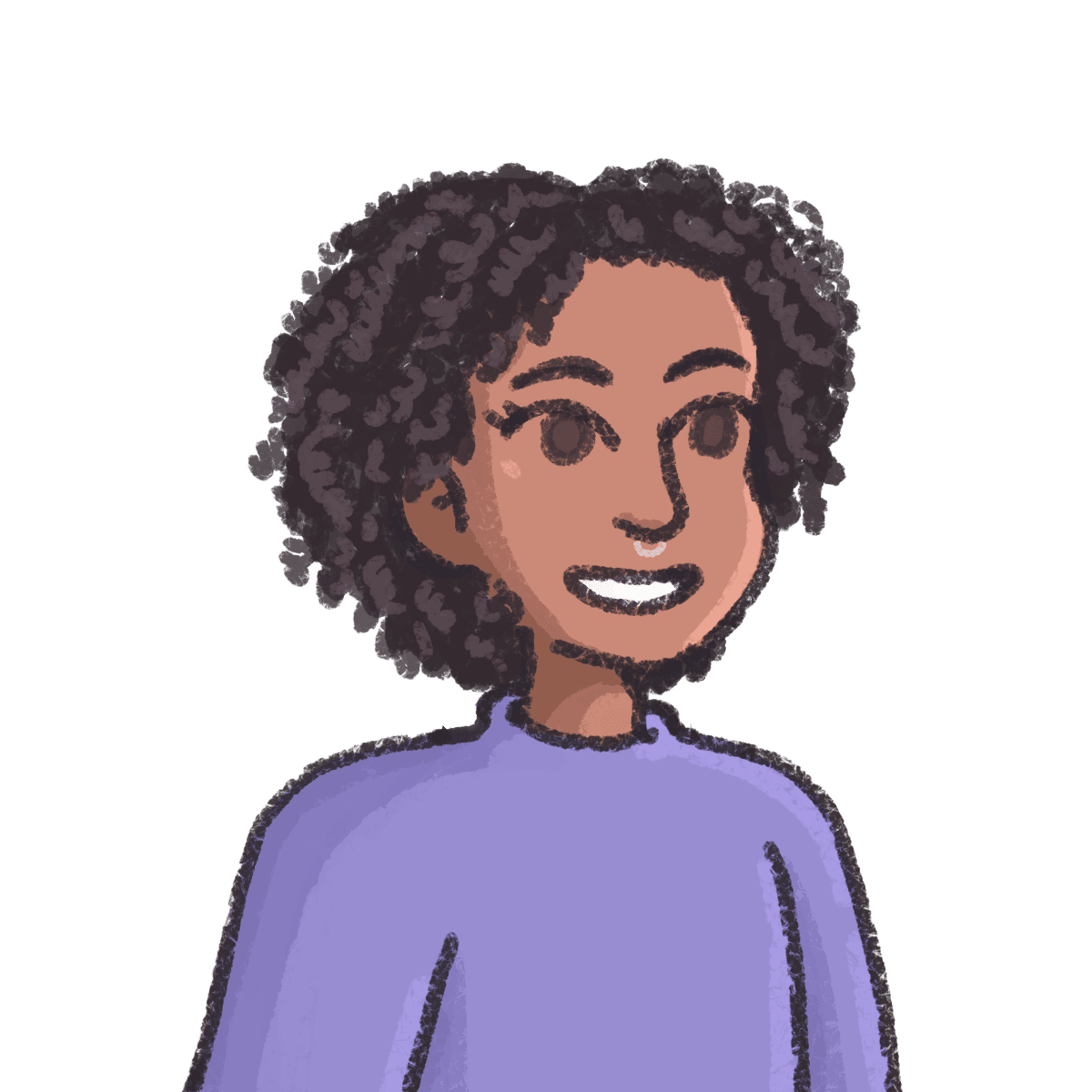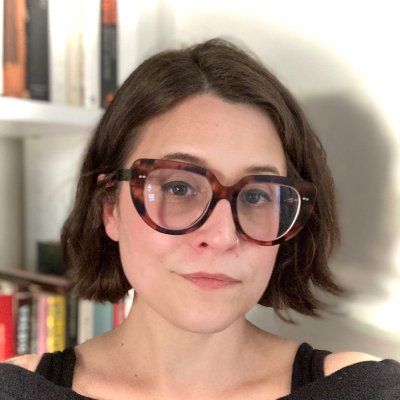I've been a long-time reader of Mandy Brown's excellent blog-slash-library for years now, and was delighted to see her become a Buttondown user. We chatted about how they think about the evolving role of online spaces and structures, and the importance of writing and forging connections.
Tell me a bit about yourself and your background.
I’m a reader, writer, and former (possibly reformed, the jury is still out) tech leader, having served as a CEO, co-founder, VP, and labor organizer across a variety of tech and media companies. These days, I’m a work coach: I help emerging and established leaders build humane, sustainable, and impactful work experiences for themselves and their teams.
I write because I can’t not write. I write because I read and reading is writing, for me.
Tell me a little bit about AWL! What do you write about?
The simplest answer is that I write what’s on my mind. But because I’m a dilettante, that can include almost anything. AWL is organized around my reading, as my reading is what organizes my thoughts. So I write about books but that means I write about reading, altruism, work, technology, time, necromancy, family, capitalism, gender, and honestly a lot more, it’s not a short list.
AWL has been around for over a decade, which is no mean feat. What inspired you to get started, and what inspires you to keep writing?
This year marks AWL’s fifteenth year, which is as surprising to me as to anyone. I remembering wanting to write publicly, and first looking at how other people were doing that, and coming up with all kinds of ideas about what I could do. But none of those ideas stuck. They all seemed like a lot of work that I wasn’t excited to do. Eventually, I realized I was already doing the kind of writing I wanted, I just wasn’t doing it where anyone (myself included) could really see it: as I was reading, I was taking notes and making connections in a bunch of mismatched paper notebooks. It occurred to me that that was a habit I could build on, by just moving the writing from one place to another.
As for keeping it going, I’ve never had a plan, and I don’t think I often feel anything like inspiration. The writing is as much habit and impulse as anything else. I write because I can’t not write. I write because I read and reading is writing, for me.
But I’ve also been particular about where I write, and I think that’s been a big part of keeping things going: AWL has always been something that I owned and made (originally, by myself; later, with the help of several trusted friends who are better at web development than I am). That let me play with the format and structures, and to build something that felt like a good container for my mind. I think that container has been critical: it’s given me space to experiment with and discover my own way of writing, absent the expectations or enforcements of any platform.
In the beginning, the blog had a complementary relationship with Twitter, in that Twitter was where I built a readership. But at some point, that complementary relationship started to look like something else. I remember responding to a post from Kathy Sierra that posited that the most dangerous time for a woman on the internet was when she was being listened to. And realizing that if I hadn’t hit that point yet, I was certainly dancing right up close to it. So building a newsletter was a way to both have a lifeboat off Twitter and to have a place where I felt it was safe for me to write and for people to listen, without the fluorescent visibility and context collapse that social media was designed for.
I suspect that if I hadn’t had my own place—if I’d been beholden to one or another platform—I wouldn’t still be doing this all these years later.
It doesn’t feel like a numbers game; it feels like a gift.
This resonates with me a lot, and I'd love for you to expand upon it. How have the structures (both implicit and explicit) changed over time?
The reading notes evolved from being mostly contextual—very short, often unremarked upon excerpts—into more standalone posts in which my own writing bracketed that from the books. A notion of essays, as distinguished from notes, emerged at some point—I don't recall exactly when, but I’m pretty sure it was because I suddenly had the need to write something that didn’t fit into the shape of a reading note. I added a section for newsletters; I took that section out and folded the letters in.
More interestingly, I think that as the writing has accumulated over the years, and the bones of the place—the network of books connected to writing connected to books—has held steady, it’s become really fertile ground. Often when I start to write something I recall something I’ve written before that I can connect it to; or I’ll be looking at some writing from the past and it will spark some current thought. I didn’t plan this, but the mere persistence of a container in which I get to make all the decisions has allowed something more interesting to emerge than I could have predicted.
I definitely know the feeling of having posted something on traditional social media and having the moment of "uh-oh — what happens if someone intentionally misconstrues or takes this out of context? Am I going to regret this?" Can you talk a bit more about the way publishing on your site/newsletter feels compared to throwing something into the great algorithmic void?
There’s just something more intimate about emailing people; there’s an implied permission in being granted someone’s email address for the express intent of sending them a letter that I just don’t think occurs in modalities oriented around “following.” It doesn’t feel like a numbers game; it feels like a gift.
Where did you first learn of Buttondown, and what made you decide to give it a try?
I’m pretty sure I first learned about it when stacy-marie ishmael started using it for her newsletter, which I read religiously. I had been on Tinyletter for a bit at that point—and honestly Tinyletter was a good little tool, I had few complaints about it. But it was clear even back then that it was somewhat adrift, that no one was at the helm. I wanted a platform that was being actively cared for, something I could trust would keep working, and that could flex and adapt to what I was doing, which was and still is often changing.
What are some ways Buttondown has helped you run/manage AWL?
One big thing for me is Buttondown lets me run a newsletter that feels coherent with the site, rather than some other thing that’s bolted on. It looks and feels integrated to my readers, and it fits with the way I think about the work. So many email tools are oriented towards marketing rather than writing, or else they are peppered with patterns for improving conversions, and that’s just not what I want. I don’t want engagement, I want readers.
I’m also running two newsletters now—the second is for my coaching practice, everything changes—and being able to manage both of them with one tool is very powerful. I’ve been able to take what I’ve learned from doing AWL and apply it to how I’m approaching things with the coaching practice, and vice versa.
Also, Buttondown always just works. I don’t think we appreciate software enough for being totally and completely reliable.
Just start writing. Don’t overthink it and don’t try to do what you see other people doing. Write what’s interesting to you and see what happens.
What are some things you’d be excited to see Buttondown build in the next few months?
One of the many things I love about Buttondown is that every time I feel like I need something, you’ve already anticipated that need and built something to meet it. It’s frankly a relief to not have to wear my product manager’s hat about where Buttondown is going, but to trust it will be there when I need it.
As for what I see coming, I think we’re in a really interesting time for newsletters. With Twitter’s collapse, the place for people to socially engage with each other via words (as opposed to pictures or videos or whathaveyou) has splintered, and it’s not at all clear that any new place is (or should) arise in it’s place. But email is a natural place for word-lovers to turn, not only because it’s text-first but also because it belongs to everyone and no one. I don’t know what we’re going to need to manage through this change, but I trust Buttondown will have it.
What advice would you give to someone starting their own blog?
Just start writing. Don’t overthink it and don’t try to do what you see other people doing. Write what’s interesting to you and see what happens. Start with a small friends-only newsletter if you need a safe space to practice, but don’t not write. That’s the only way.

